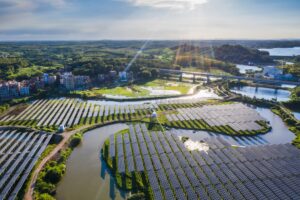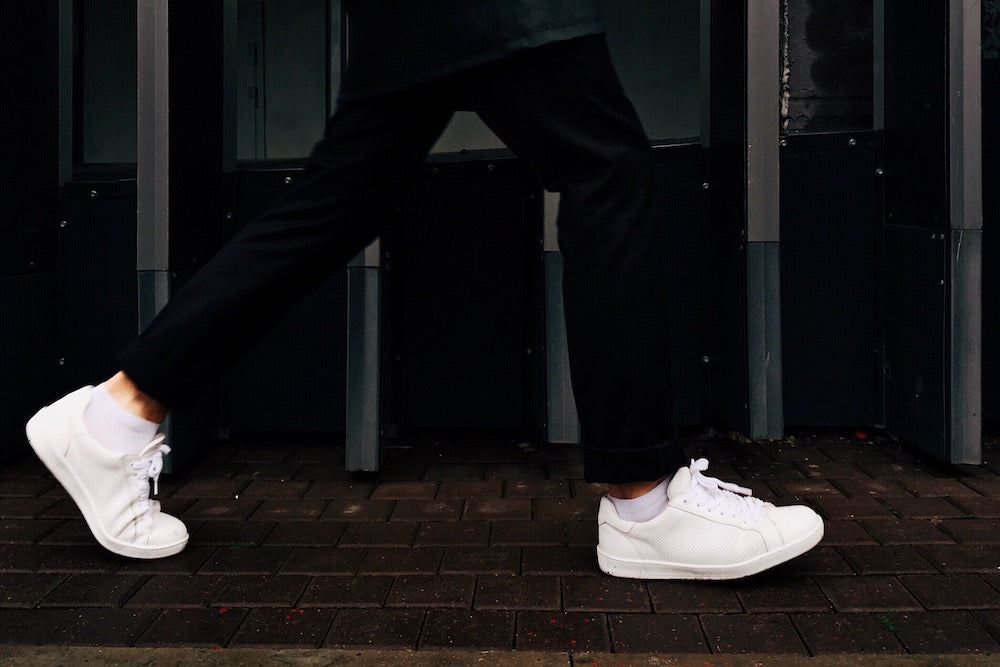As people become increasingly aware of the impact of their consumption on the environment and society, sustainable fashion has gained momentum as a way to align values with style. However, as with any trend, there’s a risk of greenwashing or superficial claims that don’t match the reality behind the products. That’s why it’s crucial to distinguish genuine sustainability leaders from opportunistic imitators.
One brand that stands out in the crowded landscape of sneakers is Veja, a French-Brazilian company that has been pioneering ethical and eco-friendly practices since its foundation in 2005. In this post, we’ll explore the values, materials, and impact of Veja’s sustainable sneakers and why they matter.
Values
Veja’s mission is to create sneakers that respect both the people who make them and the planet they inhabit. This mission is reflected in their values, which include transparency, fairness, responsibility, and innovation. By disclosing their entire production chain, from sourcing to distribution, Veja aims to promote more conscious and informed consumption.
By establishing direct and long-term relationships with small-scale producers of organic cotton and Amazonian rubber, Veja ensures fair prices and dignified working conditions. By reducing their carbon footprint through renewable energy, sustainable transport, and circular models, Veja shows that sustainability is not a trade-off between profit and ethics but a way to create value for all stakeholders.
Materials
Veja’s commitment to sustainability is also evident in the materials they use. Instead of relying on synthetic materials derived from petrochemicals or animal products raised in intensive farms, Veja sources organic and recycled alternatives that minimize environmental and social harm.
For instance, Veja uses organic cotton that grows in agroforestry systems alongside food crops, which improves soil health, water retention, and biodiversity. Veja also uses Amazonian rubber tapped by indigenous communities who protect the rainforest and their culture and earn higher incomes than those who engage in deforestation or cattle ranching. Veja also uses recycled polyester made from plastic bottles for their B-Mesh fabric, saving energy, water, and waste.
Impact
Veja’s sustainable practices are not just good intentions but measurable actions. By calculating their carbon footprint throughout their value chain, Veja has identified areas where they can improve and set targets to reduce emissions.
For example, Veja has reduced airfreight from Brazil to retailers by banning it in 2021, which reduces their transportation CO2 emissions by 92%. Veja has also launched Veja x Darwin, a take-back program that collects and recycles old sneakers to reduce their end-of-life emissions.
Veja has also increased the proportion of ChromeFree leather, a more ecological alternative to traditional leather, from 8.55% in 2019 to 45% in 2021. Veja’s sustainability impact goes beyond carbon, though. Veja contributes to a more resilient and equitable food and fiber system by promoting regenerative agriculture, biodiversity conservation, and fair trade.
Final Thoughts
Veja’s sustainable sneakers are fashionable and responsible choices for conscious consumers. By embodying values such as transparency, fairness, responsibility, and innovation, Veja sets an example of how businesses can align their interests with those of society and the environment. Veja shows that sustainability is not a sacrifice of quality or comfort but a source of creativity and innovation by using organic, recycled, and ethical materials. By measuring, disclosing, and improving their impact, Veja demonstrates that sustainability is not a destination but a journey of continuous improvement. Therefore, by choosing Veja’s sneakers, we enhance our style and contribute to a more sustainable future.
Related Topic:
Exploring Sustainability in Fashion: Organic Cotton, Amazonian Rubber, and Similar Eco-Friendly Materials
As consumers become more aware of the environmental impact of fashion, sustainable materials are becoming increasingly popular in the industry. Two such materials are organic cotton and Amazonian rubber, which have a lower environmental impact than conventional materials and offer a range of benefits for the environment and local communities. In addition, other eco-friendly materials are gaining popularity in the sustainable fashion industry. This post will explore the benefits of these materials and why they are important for sustainable fashion.
Organic Cotton
Organic cotton is a type of cotton that is grown without the use of synthetic fertilizers, pesticides, and other harmful chemicals. Instead, organic cotton is grown using natural methods that promote soil health and biodiversity, such as crop rotation, intercropping, composting, and natural pest control methods. Organic cotton has a range of benefits for the environment, such as reduced soil erosion and water pollution, and for farmers, who are exposed to fewer harmful chemicals.
In addition, organic cotton is increasingly being used in the fashion industry as a sustainable alternative to conventional cotton. Many brands are now using organic cotton in their clothing, bedding, and other textile products to become more sustainable.
Amazonian Rubber
Amazonian rubber is a type of natural rubber that is extracted from rubber trees that grow in the Amazon rainforest. Extracting rubber from these trees involves making cuts in the bark, allowing the milky sap to flow out and be collected. This sap is then processed into various forms of rubber products, such as sheets, blocks, and latex.
Amazonian rubber has a range of benefits for the environment and local communities. Rubber trees help to preserve the biodiversity of the rainforest, and the collection and processing of rubber provide a sustainable source of income for local communities. In addition, Amazonian rubber is a durable and versatile material that can be used in various products, such as footwear, bags, and other accessories.
Similar Eco-Friendly Materials
In addition to organic cotton and Amazonian rubber, other eco-friendly materials are gaining popularity in the sustainable fashion industry. These materials include:
- Hemp: Hemp is a fast-growing plant that requires minimal water and no pesticides or herbicides to grow. It can be used to make various products, including clothing, footwear, and accessories.
- Recycled Polyester: Recycled polyester is made from post-consumer plastic bottles and has a significantly lower environmental impact than conventional polyester.
- Cork: Cork is a renewable and biodegradable material that can be used to make various products, including footwear, accessories, and home goods.
- Pinatex: Pinatex is a vegan leather alternative made from pineapple leaves. It is a sustainable and cruelty-free material that can be used to make shoes, bags, and other accessories.
- Tencel: Tencel is a fiber made from sustainably harvested wood pulp. It is known for its softness and breathability and can be used to make a variety of clothing and home goods.
These materials, along with organic cotton and Amazonian rubber, are becoming increasingly popular in the sustainable fashion industry as more brands prioritize environmental and social responsibility in their products.
Final Thoughts
Sustainable materials such as organic cotton and Amazonian rubber are important for the fashion industry as they offer a range of benefits for the environment and local communities. In addition, other eco-friendly materials such as hemp, recycled polyester, cork, Pinatex, and Tencel are gaining popularity as sustainable alternatives to conventional materials.
As consumers, we can prioritize sustainability in our fashion choices by choosing products made from these materials and supporting brands that prioritize sustainability and ethical production practices. By doing so, we can help reduce the fashion industry’s environmental impact and support a more sustainable and ethical future for fashion.









Reader Interactions